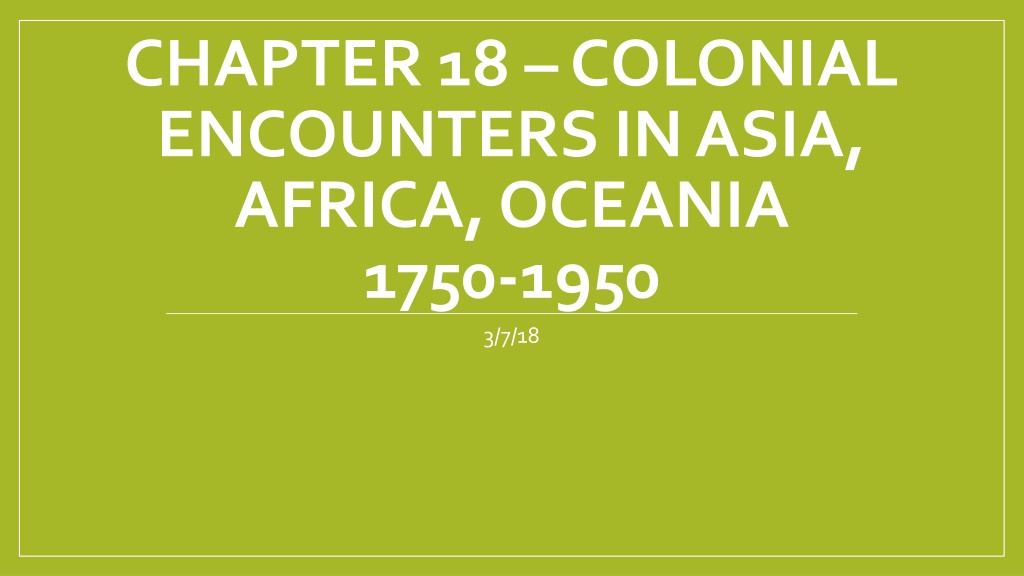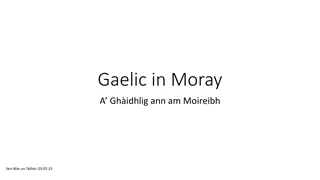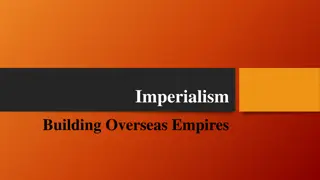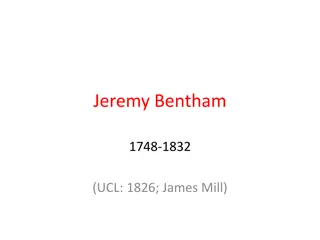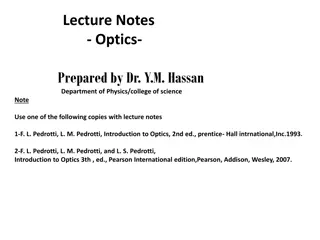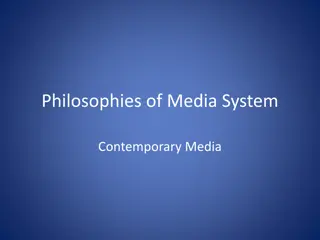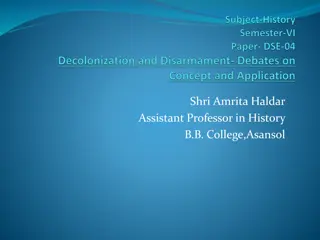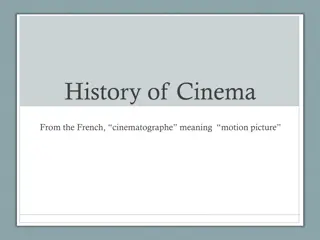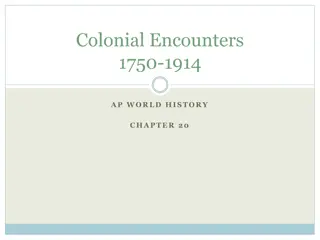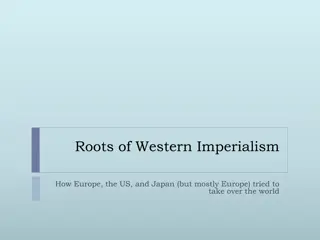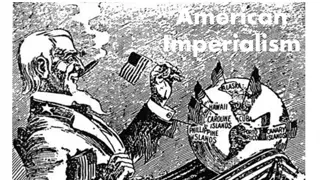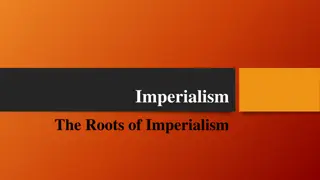Global Interactions and Imperialism in the 18th and 19th Centuries
This content covers colonial encounters in Asia, Africa, and Oceania from 1750 to 1950, focusing on the impact of European imperialism. It delves into the economic, political, and social dynamics of this period, highlighting factors such as linguistic separation, social Darwinism, and the consequences of imperialism on global interactions, nationalism, and revolutions.
Download Presentation

Please find below an Image/Link to download the presentation.
The content on the website is provided AS IS for your information and personal use only. It may not be sold, licensed, or shared on other websites without obtaining consent from the author. Download presentation by click this link. If you encounter any issues during the download, it is possible that the publisher has removed the file from their server.
E N D
Presentation Transcript
CHAPTER 18 COLONIAL ENCOUNTERS IN ASIA, AFRICA, OCEANIA 1750-1950 3/7/18
Bellwork: 3/7/18 What is the location of the image? What elements in the painting point to that location? The painting is set in India. The clues are the elephant, the architecture of the large gate in the left middle ground, and the sepoys marching alongside. Read the first paragraph only on page 879, and answer the following: Why would the British colonialist be reluctant to speak English to the Kenyan boys? As noted in the next paragraph, the Englishmen wanted to maintain the colonial distance between natives and whites. How does the painting on page 878 reflect imperialism? The British couple on the leading elephant are the viceroy of India and his wife. This painting represent the British Raj. The front elephant is draped in gold, while the elephants of the Indian leaders are not. The British officials also have more foot escorts. In what ways did linguistic separation help maintain colonial political and economic structures? Colonists believed that keeping colonizers and the colonized as separate as possible decreased the chances of insurrection and of mixing of the races. This is the author s foreshadowing of social Darwinism, a major ideology justifying European imperialism in this era.
AP Exam Tips Take notes on the important factors on page 882 at the bottom, that contributed to nineteenth-century imperialism. Know examples of acceptance and rejection of European imperialism by Africans and Asians. Nineteenth-century imperialism in Asia and Africa led to twentieth- century world wars. Study maps 18.1 and 18.2 closely and note which areas were imperialized by outside powers. You must know about ideas regarding race in history, especially since ca. 1450. The concept of social Darwinism is important and will likely appear on the AP exam. Be able to compare motivation and outcomes of nineteenth- and early twentieth-century imperialism.
Key Concept 5: Global Interactions, c. 1750 C.E. to 1900 C.E. 5.1 Industrialization and Global Capitalism New patterns of global trade and production developed as industrialists sought raw materials and new markets for increasing amounts of factory- produced goods. The global scale of trade and production led to the development of large-scale transnational businesses. Some governments promoted state- sponsored visions of industrialization. 5.2 Imperialism and Nation-State Formation Industrializing power established transoceanic empires. In some parts of their empires, Europeans established settler colonies. Imperialism influenced state formation and contraction around the world. New racial ideologies, especially social Darwinism, facilitated and justified imperialism.
Key Concept 5: Global Interactions, c. 1750 C.E. to 1900 C.E. 5.3 Nationalism, Revolution, and Reform Discontent with imperial rule propelled anticolonial movements.
Review Map of Time page. 881 Imperialism began in the late 1750s with the British takeover of India. 1. Imperialism began to end in the 1920s. 2. Under the leadership of Gandhi. 3.
KING LEOPOLDS GHOST https://www.youtube.com/watch?v=-oxzQ1M2Ymg&t=5s
CRASH COURSE EPISODE 35 IMPERIALISM https://www.youtube.com/results?search_query=crash+course+35
CRASH COURSE 213 ASIAN RESPONSES TO IMPERIALISM https://www.youtube.com/results?search_query=crash+course+213+
HOMEWORK: COMPLETE THE GUIDED READING QUESTIONS ON THE FRONT PAGE OF FO Pages 882-902 (You should have already read these in preparation for this chapter.)
HTS: CCOT Read pages 884-889 and apply to the chart on your Foldout. What were changes the changes and continuities between first-wave and second-wave European conquests? Work in pairs.
